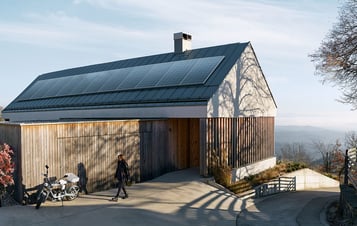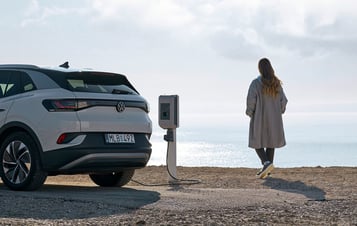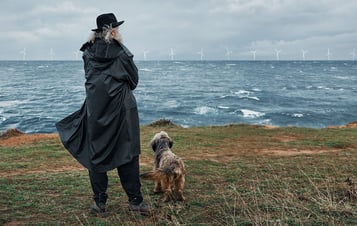Video player requires marketing cookies.
To view this content please click here to allow marketing cookies.
Heating shouldn’t heat up the planet
Discover how we’re transforming the heating of buildings today, so you can live fossil free tomorrow.
Heating cities sustainably

At Vattenfall, we are launching an ambitious plan to heat London’s buildings without fossil fuels. Sounds impossible? It’s not. By the 2040s, up to half a million homes, businesses, and public buildings in London could connect to a city-wide heat network. This would save London 4.8 million tonnes of CO2 emissions over a 20-year period. The goal? To decarbonise London’s buildings.
Today, over 25 million UK homes are still using fossil fuels for heating, and heating is responsible for a third of the country’s greenhouse gas emissions. This could all change thanks to a new heat network that Vattenfall plans to develop in South-East London. Vattenfall will work with recycling and waste management company, Cory to capture heat from their local energy from waste facility. The result? The first homes are expected to be heated sustainably by 2030 thanks to the new heat network.
Homes heated by algae

Could algae heat homes? In Gustavsberg, Sweden, this is now a reality. In a partnership with AstaReal, Vattenfall supplies Gustavsberg residents with more than 20 per cent of their heating requirements through a solution that uses excess heat that comes from AstaReal’s algae cultivation. It’s a partnership that in an innovative way provides 2,500 new apartments with a more sustainable heating solution.
By installing reversible heat pumps at AstaReal’s plant in Gustavsberg, it will be possible to recover excess heat from the algae production process at the plant. This means that more than 15 million kilowatt hours of heat per year will be recovered and reused in Gustavsberg.
Berlin’s largest aircon is turning up the heat

In Berlin, Vattenfall Wärme and Siemens Energy are about to test the combination of district heat, power and cooling to save even more emissions. Since 1997, the cooling central at Potsdamer Platz in Berlin has been reliably supplying thousands of office spaces, apartments and numerous cultural institutions in the neighbourhood with locally and efficiently generated cooling. This process generates waste heat that, until now, could not be used and was released into the environment via cooling towers.
Thanks to the integration of a new high-temperature heat pump from Vattenfall’s partner Siemens as part of the ongoing operations, heating, cooling and electricity will be combined for enhanced resource efficiency in the future. The use of the heat pump significantly reduces heat emissions and provides an additional heat supply for the district heating network of around 55 GWh annually, resulting in an estimated annual saving of around 6,500 tonnes of CO2 emissions and 120,000 m3 of cooling water.
Sustainable energy to heat Amsterdam homes

We’re not only changing things up heat wise in London, Berlin and Gustavsberg. Amsterdam is also in for a big change when it comes to sustainable heating. By 2040, we want to supply Amsterdam with 100 percent sustainable heat. To be able to reach this goal, we are aiming to build Europe’s largest E-boiler.
“The E-boiler only switches on if the electricity mix is sustainable with a lot of electricity from solar and wind. When there is insufficient green energy, the gas-fired power plants in Diemen are still needed to produce electricity – power plants that also supply heat very efficiently. We expect that these gas-fired plants will remain necessary in the coming decades for security of supply in the Netherlands; first on natural gas, but later hydrogen from renewable sources,” says Alexander van Ofwegen, Director of Heat Vattenfall Netherlands.
With this new E-boiler, we expect to be able to supply approximately 15 percent of the heat in the Amsterdam region with renewable energy from wind and solar power.
Want to know more?
Find out more about this topic here.
- Vattenfall launches ambitious plan to heat London’s buildings without fossil fuels
- Vattenfall and AstaReal sign comprehensive energy contract: Excess heat from algae cultivation will heat households in Gustavsberg
- Vattenfall to build Europe’s largest E-boiler in Amsterdam
- Vattenfall launches pilot data centre project to offer sustainable computing capacity
- Waste – transforming waste to energy
- Berlin’s largest air-conditioning system is gearing up to generate climate-friendly heat in the future



